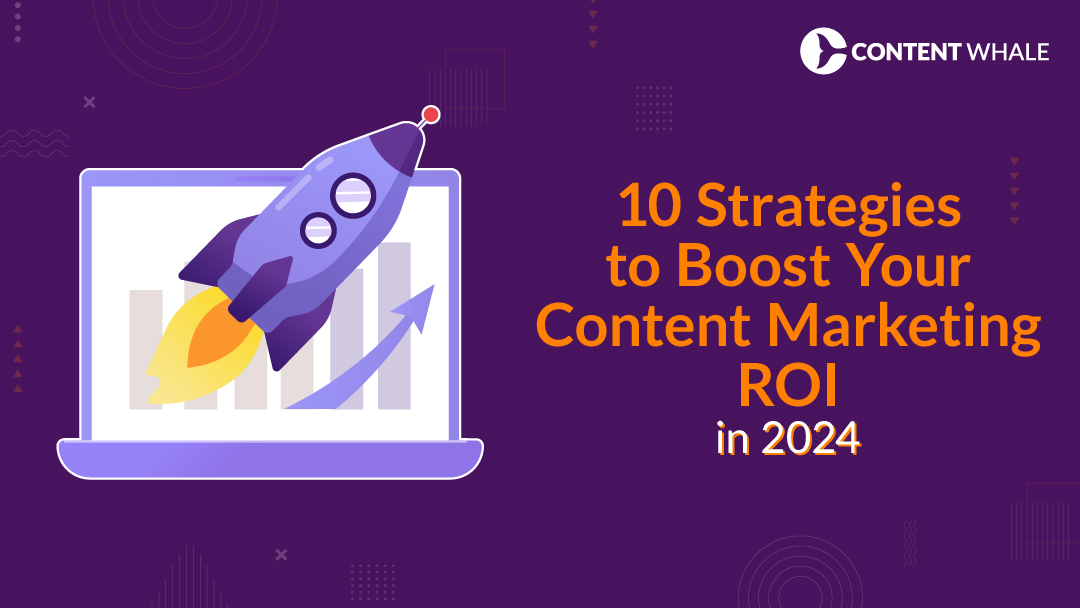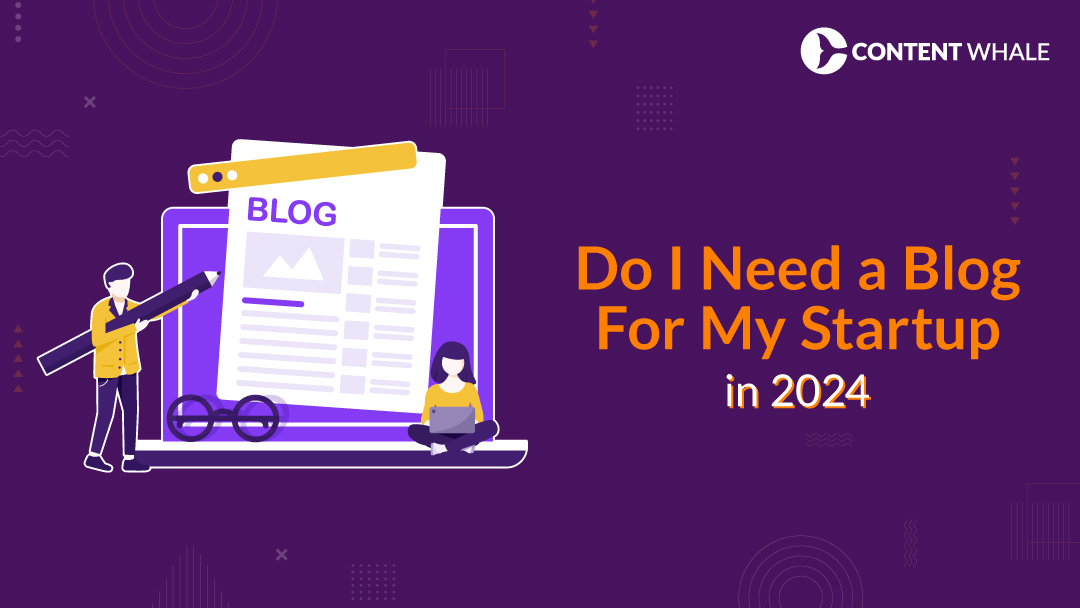Understanding the content marketing return on investment (ROI) is essential for any business. It helps determine the effectiveness of your marketing efforts and guides budget allocation. Many businesses struggle to maximize their content marketing and ROI due to rapidly changing trends and varying customer behaviours.
This blog aims to address these challenges by offering actionable strategies. We will discuss how to increase content marketing ROI with real-world examples and practical tips. By the end of this article, you will know how to track marketing ROI and measure content marketing ROI effectively. These insights will be particularly beneficial for B2B content marketing ROI and inbound marketing ROI.
Strategy 1: Set Clear Goals and KPIs
1. The Importance of Setting Clear, Measurable Goals
Setting clear, measurable goals is essential for maximizing content marketing’s return on investment. Specific targets help track progress and align efforts with business objectives. Without these, evaluating the success of your content strategy is challenging.
2. Real-World Example
A notable example is from HubSpot. By implementing SMART goals (Specific, Measurable, Achievable, Relevant, and Time-bound), they increased their content marketing and ROI significantly. HubSpot set clear KPIs for lead generation, customer acquisition, and engagement, allowing them to focus resources effectively and measure success accurately.
3. Tips for Setting Effective Goals and KPIs
- Align KPIs with Business Objectives: Ensure your KPIs support your broader business goals.
- Use SMART Goals: Define goals that are Specific, Measurable, Achievable, Relevant, and Time-bound.
- Regularly Review and Adjust Goals: Frequently assess and refine your KPIs based on performance data.
Clear goals and KPIs make it easier to measure content marketing ROI and understand how to increase it. Regular reviews ensure your strategy remains effective and responsive to changes. Monitoring tools like Google Analytics, SEMrush and Ahrefs can help you track and adjust your strategy efficiently.
Strategy 2: Create High-Quality, Relevant Content
1. The Impact of High-Quality Content on ROI
High-quality, relevant content significantly boosts content marketing return on investment. Engaging, valuable content attracts and retains audience attention, leading to higher engagement and conversion rates. Quality content is also more likely to be shared, expanding your reach organically.
2. Real-World Example
A great example is River Pools and Spas, a company that significantly increased their content marketing and ROI through high-quality content. They created a comprehensive blog and video series addressing common customer questions and concerns about fiberglass pools. This content helped them rank highly in search results, driving a substantial increase in organic traffic. As a result, they saw a 70% increase in sales, demonstrating a notable return on their content investment.
3. Tips for Ensuring Content Relevance and Quality
- Understand Your Audience: Conduct thorough audience research to grasp their needs and interests. Utilize tools like Google Analytics for insights.
- Focus on Value: Provide actionable information that helps solve problems or answer questions.
- Update Regularly: Keep content current and relevant to maintain its value over time.
Creating high-quality, relevant content is key to increasing content marketing ROI. It ensures your audience finds value in your material, leading to higher engagement and conversions. Regularly reviewing and updating content helps maintain its relevance, which is essential for effective inbound marketing ROI.
Strategy 3: Leverage SEO Best Practices
1. Role of SEO in Enhancing Content Visibility and ROI
SEO enhances content visibility, driving more organic traffic and improving content marketing return on investment. Effective SEO practices ensure your content ranks higher on search engines, making it easier for potential customers to find you.
2. Real-World Example
Moz is a notable example of a company that significantly improved their content marketing and ROI through SEO optimization. By focusing on keyword research, on-page SEO, and building quality backlinks, Moz increased their organic traffic by 50%. This boost in visibility led to higher engagement and conversion rates, illustrating a substantial content ROI.
3. Essential SEO Practices to Implement
- Perform Comprehensive Keyword Research: Identify and use keywords relevant to your audience and business goals.
- Optimize Meta Titles, Descriptions, and Headers: Ensure these elements are clear, concise, and include primary keywords.
- Focus on Mobile Optimization and Fast Loading Times: Improve user experience on all devices to reduce bounce rates and increase engagement.
Implementing these SEO best practices is essential for how to increase content marketing ROI. They improve your content’s visibility and attract qualified traffic, which is crucial for effective inbound marketing ROI. Regularly updating and refining your SEO strategy ensures sustained performance and helps you measure content marketing ROI accurately.
Strategy 4: Utilize Data-Driven Insights
1. Importance of Data in Refining Content Strategy
Data-driven insights help refine your content strategy, ensuring that your efforts align with audience needs and business goals. Analyzing data allows for informed decisions and continuous optimization, enhancing the content marketing return on investment.
2. Real-World Example
Netflix exemplifies the power of data-driven insights in improving content marketing and ROI. By analyzing user data such as viewing habits, search queries, and ratings, Netflix created highly popular shows like “House of Cards” and “Stranger Things.” This data-driven approach increased viewer engagement and subscriptions, significantly boosting their content ROI.
3. Tools and Methods for Gathering and Analyzing Data
- Google Analytics: Track website performance metrics such as traffic, user behavior, and conversion rates.
- Heatmaps: Use tools like Hotjar to visualize user interactions and identify areas for improvement.
- A/B Testing: Optimize content elements by comparing different versions and analyzing performance.
Using these tools helps you measure content marketing ROI accurately and understand how to increase it. Regular data analysis ensures your content remains effective and relevant, driving higher engagement and conversions. This approach is crucial for optimizing inbound marketing ROI and refining strategies based on actionable insights.
Strategy 5: Engage in Content Repurposing
1. Benefits of Repurposing Content for Different Channels
Repurposing content maximizes the value of existing material, extending its reach across multiple channels. This approach boosts content marketing return on investment by making the most of your content creation efforts, increasing visibility, and engaging diverse audiences.
2. Real-World Example
Buffer, a social media management company, effectively utilized content repurposing to improve their content marketing and ROI. They transformed blog posts into podcasts, infographics, and social media snippets. This strategy increased their content reach and engagement, demonstrating a significant boost in content ROI.
Tips for Effective Content Repurposing
- Identify Evergreen Content: Select content that remains relevant over time.
- Adapt for Different Formats: Convert articles into videos, podcasts, and infographics.
- Tailor for Each Platform: Customize content to fit the style and preferences of each platform’s audience.
Repurposing content helps measure content marketing ROI by tracking performance across various formats and channels. It’s a strategic way to increase content marketing ROI by reaching new audiences and reinforcing your message. Regularly updating and repurposing content ensures it remains fresh and engaging, essential for sustaining inbound marketing ROI.
Strategy 6: Implement Personalization Strategies
1. The Power of Personalized Content in Driving ROI
Personalized content significantly boosts content marketing return on investment. Tailoring content to individual preferences enhances user engagement and conversion rates, leading to a higher content ROI.
2. Real-World Example
Amazon is a prime example of effective personalization. They use customer data to provide personalized product recommendations, such as the “Frequently bought together” feature. This strategy not only enhances the shopping experience but also increases cross-selling opportunities. As a result, Amazon has seen a significant boost in content marketing and ROI, with personalized recommendations driving higher average order values and customer satisfaction.
3. Techniques for Personalizing Content Effectively
- Segment Your Audience: Group customers based on behaviour, demographics, and purchase history to tailor content.
- Use Dynamic Content: Implement real-time content updates to match user interactions and preferences.
- Leverage Predictive Analytics: Utilize AI to predict customer behaviour and deliver relevant content at the right time.
Personalizing content effectively is key to understanding how to increase content marketing ROI. By delivering tailored experiences, businesses can improve engagement, conversions, and inbound marketing ROI. Regular analysis helps measure content marketing ROI and ensures that personalization strategies remain effective.
Strategy 7: Invest in Paid Promotion
1. How Paid Promotion Can Amplify Content Reach and ROI
Paid promotion effectively expands content reach, leading to a higher content marketing return on investment. Targeted ad campaigns can drive immediate traffic, enhance visibility, and increase conversions, making paid promotion a powerful tool for boosting content marketing and ROI.
2. Real-World Example
Peet’s Coffee is an excellent example of a company that significantly improved their content ROI through paid promotion. By optimizing their Google Ads strategy, focusing on high-ROI keywords, and revamping ad copy, they achieved a 455% increase in revenue and a 158% increase in return on ad spend (ROAS). These changes resulted in 676% more orders, demonstrating a substantial boost in their content marketing return on investment.
3. Best Practices for Paid Content Promotion
- Target the Right Audience: Use detailed targeting options to reach your ideal customers.
- Optimize Ad Copy and Creatives: Ensure your ads are engaging and relevant to your audience.
- Monitor and Adjust Campaigns: Regularly review performance metrics and adjust strategies to maximize ROI.
Investing in paid promotion helps measure content marketing ROI by providing clear metrics on campaign performance. It’s a strategic way to understand how to increase content marketing ROI and improve inbound marketing ROI through targeted efforts.
Strategy 8: Focus on Content Distribution
1. The Importance of a Robust Content Distribution Strategy
A strong content distribution strategy ensures your material reaches the right audience, enhancing your content marketing return on investment. Effective distribution maximizes content visibility, engagement, and conversions, driving higher content marketing and ROI.
2. Real-World Example
LockNLube, a company specializing in automotive greasing products, saw significant growth by refining its content distribution strategy. It used a mix of organic and paid channels, including optimizing its listings on Amazon and eBay and running targeted ads on TikTok. This comprehensive approach led to a 54% increase in revenue and a 24.7% rise in conversion rates, showcasing a substantial improvement in its content ROI.
3. Tips for Effective Content Distribution
- Identify Key Channels: Determine where your audience spends their time and focus your efforts there.
- Leverage Multi-Channel Distribution: Use a mix of owned, earned, and paid media to expand reach.
- Monitor and Adjust Strategies: Regularly assess the performance of your distribution channels and optimize as needed.
Focusing on strategic content distribution helps measure content marketing ROI effectively by tracking performance across different platforms. This approach is vital for understanding how to increase content marketing ROI and improving inbound marketing ROI through targeted efforts.
Strategy 9: Collaborate with Influencers
1. The Role of Influencer Marketing in Enhancing Content ROI
Influencer marketing effectively boosts content marketing return on investment. Partnering with influencers can expand your reach, build brand credibility, and drive higher engagement and conversions.
2. Real-World Example
Samsonite significantly increased their content marketing and ROI by collaborating with influencers on their “Take What’s Yours” campaign. By encouraging audiences to take their PTO and travel, the campaign didn’t directly push for purchases. Instead, it promoted a positive lifestyle change. This strategy resulted in a 97% increase in new users visiting their website, a 78% rise in branded searches, and 35,000 new followers on TikTok, demonstrating substantial content ROI.
3. Strategies for Finding and Collaborating with Influencers
- Identify Relevant Influencers: Choose influencers whose audience aligns with your target market.
- Build Authentic Relationships: Foster genuine connections to ensure the influencer’s message resonates.
- Monitor and Measure Impact: Use tools like Google Analytics and HypeAuditor to track campaign performance and measure content marketing ROI.
Collaborating with influencers is a powerful strategy for understanding how to increase content marketing ROI. By leveraging influencers’ authenticity and reach, businesses can improve their inbound marketing ROI and effectively track marketing ROI through detailed metrics and performance data.
Strategy 10: Measure and Analyze ROI Regularly
1. The Necessity of Regular ROI Measurement and Analysis
Regularly measuring and analyzing ROI is essential for optimizing content marketing return on investment. Continuous evaluation helps identify what works and what needs improvement, ensuring that resources are used effectively to maximize returns.
2. Real-World Example
A notable example is SocialPilot, a company that significantly enhanced their content marketing and ROI by implementing a rigorous process for measuring social media ROI. They used various metrics, such as conversion rates, cost per acquisition (CPA), and brand sentiment, to track and adjust their campaigns. This data-driven approach allowed them to refine their strategies, leading to a substantial increase in conversions and overall content ROI.
3. Tools and Metrics for Tracking Content Marketing ROI
- Google Analytics: Track website performance, user behavior, and conversion rates.
- Hootsuite Analytics: Monitor social media engagement and effectiveness.
- Cost Per Acquisition (CPA): Measure the cost of acquiring new customers through marketing efforts.
- Customer Lifetime Value (CLTV): Assess the long-term value of each customer to your business.
Tracking these metrics helps businesses understand how to increase content marketing ROI and effectively measure it. Regular analysis and adjustment ensure that your inbound marketing ROI remains high, making your marketing efforts more efficient and impactful.
Conclusion
Maximizing content marketing return on investment requires a strategic approach. We discussed 10 effective strategies to enhance your content marketing and ROI. Setting clear goals and KPIs helps track progress. Creating high-quality content drives engagement. Leveraging SEO increases visibility. Utilizing data-driven insights refines strategies. Repurposing content extends its value. Personalizing content boosts conversion rates. Investing in paid promotion amplifies reach. Focusing on content distribution ensures your message reaches the right audience. Collaborating with influencers increases brand credibility and reach. Regularly measuring and analyzing ROI ensures continuous improvement.
Applying these strategies can significantly boost your B2B content marketing ROI and overall content ROI. Understanding how to increase content marketing ROI and knowing how to track marketing ROI are essential for sustainable success. Regular assessment allows for quick adjustments, ensuring your inbound marketing ROI remains high. By following these practices, you can effectively measure content marketing ROI and achieve better returns on your marketing investments.
Ready to take your content marketing to the next level? Contact us for expert assistance and start boosting your ROI today!
FAQs
What is content marketing ROI and why is it important?
Content marketing return on investment (ROI) measures the revenue generated from content marketing relative to its cost. It’s crucial because it helps businesses understand the effectiveness of their marketing efforts. High content marketing and ROI indicates successful strategies that drive growth.
How can I effectively measure my content marketing ROI?
To measure content marketing ROI, track metrics like traffic, engagement, and conversions. Tools like Google Analytics and HubSpot provide detailed insights. Knowing how to track marketing ROI helps identify successful tactics and areas needing improvement.
What tools can help in tracking content marketing ROI?
Several tools can help track content marketing and ROI. Google Analytics tracks website performance, SEMrush offers SEO insights, and HubSpot provides comprehensive marketing analytics. These tools help us understand how to increase content marketing ROI and measure success.
How often should I review my content marketing ROI?
Regularly reviewing your content ROI is essential. Monthly or quarterly assessments help maintain strategy effectiveness. Frequent reviews enable quick adjustments, ensuring high inbound marketing ROI and sustained success. Consistent analysis allows businesses to stay ahead and maximize returns.





